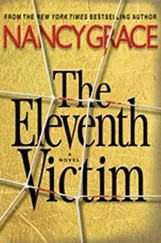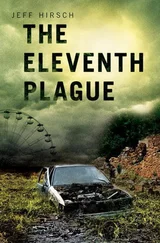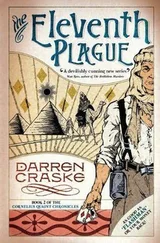Anthony Summers - The Eleventh Day
Здесь есть возможность читать онлайн «Anthony Summers - The Eleventh Day» весь текст электронной книги совершенно бесплатно (целиком полную версию без сокращений). В некоторых случаях можно слушать аудио, скачать через торрент в формате fb2 и присутствует краткое содержание. Жанр: Старинная литература, на английском языке. Описание произведения, (предисловие) а так же отзывы посетителей доступны на портале библиотеки ЛибКат.
- Название:The Eleventh Day
- Автор:
- Жанр:
- Год:неизвестен
- ISBN:нет данных
- Рейтинг книги:3 / 5. Голосов: 1
-
Избранное:Добавить в избранное
- Отзывы:
-
Ваша оценка:
- 60
- 1
- 2
- 3
- 4
- 5
The Eleventh Day: краткое содержание, описание и аннотация
Предлагаем к чтению аннотацию, описание, краткое содержание или предисловие (зависит от того, что написал сам автор книги «The Eleventh Day»). Если вы не нашли необходимую информацию о книге — напишите в комментариях, мы постараемся отыскать её.
The Eleventh Day — читать онлайн бесплатно полную книгу (весь текст) целиком
Ниже представлен текст книги, разбитый по страницам. Система сохранения места последней прочитанной страницы, позволяет с удобством читать онлайн бесплатно книгу «The Eleventh Day», без необходимости каждый раз заново искать на чём Вы остановились. Поставьте закладку, и сможете в любой момент перейти на страницу, на которой закончили чтение.
Интервал:
Закладка:
THIRTEEN
WHILE THE FIRE AND SMOKE OF THE ATTACKS WERE STILL IN THE AIR, top Bush administration officials had hurried out statements on a highly sensitive issue—the decision made on 9/11 to shoot down civilian airliners if they appeared to threaten Washington. Who issued that momentous order, and when?
First there had been the flat statement by Deputy Defense Secretary Wolfowitz that—had United 93 not crashed—Air Force pilots had been poised to shoot it down. Next, on the Sunday, had come Vice President Cheney’s account, in a Meet the Press interview, of how the shooting down of hijacked airliners had been authorized. Cheney said the “horrendous decision” had been made—with his wholehearted agreement—by the President himself. There had been moments, he said, when he thought a shoot-down might be necessary.
Bush took the decision during one of their phone calls that day, Cheney told Newsweek ’s Evan Thomas. “I recommended to the President that we authorize … I said, ‘We’ve got to give the pilots rules of engagement, and I recommend we authorize them to shoot.’ We talked about it briefly, and he said, ‘OK, I’ll sign up to that.’ He made the decision.”
Bush himself, speaking with The Washington Post ’s Bob Woodward, said Cheney had indeed suggested that he issue the order. His response, as he remembered it, had been monosyllabic. Just “You bet.” Later still, speaking with the 9/11 commissioners, Bush recalled having discussed the matter in a call made to him by Cheney, and “emphasized” that it was he who authorized the shoot-down of hijacked aircraft.
By the time the President wrote his 2010 memoir, that call from the Vice President had become a call he made to Cheney. Bush’s monosyllabic authorization, moreover, had transmogrified into a well thought-out plan.
“I called Dick Cheney as Air Force One climbed rapidly to forty-five thousand feet …,” the President wrote. “He had been taken to the underground Presidential Emergency Operations Center—the PEOC—when the Secret Service thought a plane might be coming at the White House. I told him that I would make decisions from the air and count on him to implement them on the ground.
“Two big decisions came quickly. The military had dispatched Combat Air Patrols—teams of fighter aircraft assigned to intercept unresponsive airplanes—over Washington and New York.… We needed to clarify the rules of engagement. I told Dick that our pilots should contact suspicious planes and try to get them to land peacefully. If that failed, they had my authority to shoot them down.”
It would have been unthinkable for the U.S. military to down a civilian airliner without a clear order from the President, as commander-in-chief. In his absence, the authority belonged to the secretary of defense, Donald Rumsfeld. “The operational chain of command,” relevant law decreed, ran “from the President to the Secretary of Defense,” and on through the chairman of the Joint Chiefs to individual commanders. The Vice President was not in the chain of command.
The generals understood that. In an earlier exercise, one that postulated a suicide mission involving a jet aimed at Washington, they had said shooting it down would require an “executive” order. The defense secretary’s authority, General Arnold told the Commission, was necessary to shoot down even a “derelict balloon.” Only the President, he thought, had the authority to shoot down a civilian airliner.
The Commission made no overt statement as to whether it believed Cheney’s assertion—that he recommended and Bush decided. Shown the final draft of the Report’s passage on the shoot-down decision, however, Cheney was furious. For all its careful language, the Report dropped a clear hint that its staff had found Cheney’s account—and Bush’s—less than convincing.
“We just didn’t believe it,” general counsel Daniel Marcus declared long afterward. “The official version,” John Farmer would say, “insisted that President Bush had issued an authorization to shoot down hijacked commercial flights, and that that order had been processed through the chain of command and passed to the fighters. This was untrue.”
Why might a phony scenario have been created? “The administration version,” Farmer noted, “implied, where it did not state explicitly, that the chain of command had been functioning on 9/11, and that the critical decisions had been made by the appropriate top officials.… None of this captures how things actually unfolded on the day.”
THE POTENTIAL NEED to shoot down an airliner occurred to the man in the hot seat at NEADS, Major Nasypany, as early as 9:20 on 9/11—after two successful terrorist strikes and the realization that there might be more to come. “My recommendation if we have to take anybody out, large aircraft,” he was taped saying, “we use AIM-9s [heat-seeking air-to-air missiles] in the face.” Nasypany began asking his team whether they could countenance such an act. Everyone knew, though, that a shoot-down would require authorization from the top.
“I don’t know,” said Technical Sergeant Watson, on the line to the FAA, “but somebody’s gotta get the President going.” “I’m amazed,” responded the operations manager at New York Center, “that we’re not at a higher level of Defcon readiness already.”
It was 9:30 by then. The President had yet to leave the school in Florida. Defense Secretary Rumsfeld, whose responsibility it was to set Defcon—the forces’ Defense Condition, or military alert status—knew of the New York attacks but had so far taken no action. A few minutes later, when the Pentagon was hit at 9:37, that key figure in the chain of command would head off to view the damage—and have no contact with the President or Vice President until after 10:00.
Staff at the National Military Command Center, whose task it was to connect the President and the defense secretary to those charged with carrying out their orders, looked for Rumsfeld in vain. It was “outrageous,” an unnamed senior White House official would later complain, for the man responsible for the nation’s defense to have been “out of touch” at such a time.
Official reports disagree on what Rumsfeld did after leaving the scene of the crash and before his reappearance at the Pentagon’s Executive Support Center around 10:15. Rumsfeld said in his Commission testimony that he had “one or more calls in my office, one of which I believe was with the President.” The Defense Department’s own report, however, states that he “tried without success to telephone the President.”
When the President and Rumsfeld did finally speak, according to the secretary’s communications assistant, the conversation covered only such questions as “Are you okay?” and “Is the Pentagon still intact?” The Commission decided that it was “a brief call, in which the subject of shoot-down authority was not discussed.”
Rumsfeld was still “just gaining situational awareness”—as he put it—as late as 10:35, when he finally joined a conference call that included Vice President Cheney. Shoot-down authority had already been issued, Cheney said, and—as the transcript of the conversation makes clear—that was news to the defense secretary:
C
HENEY:
There’s been at least three instances here where we’ve had reports of aircraft approaching Washington—a couple were confirmed hijack. And, pursuant to the President’s instructions, I gave authorization for them to be taken out … [Long pause] Hello?
R
UMSFELD:
Yes, I understand. Who did you give that direction to?
C
HENEY:
It was passed from here through the [Operations] Center at the White House, from the PEOC [shelter beneath the White House].
Читать дальшеИнтервал:
Закладка:
Похожие книги на «The Eleventh Day»
Представляем Вашему вниманию похожие книги на «The Eleventh Day» списком для выбора. Мы отобрали схожую по названию и смыслу литературу в надежде предоставить читателям больше вариантов отыскать новые, интересные, ещё непрочитанные произведения.
Обсуждение, отзывы о книге «The Eleventh Day» и просто собственные мнения читателей. Оставьте ваши комментарии, напишите, что Вы думаете о произведении, его смысле или главных героях. Укажите что конкретно понравилось, а что нет, и почему Вы так считаете.











